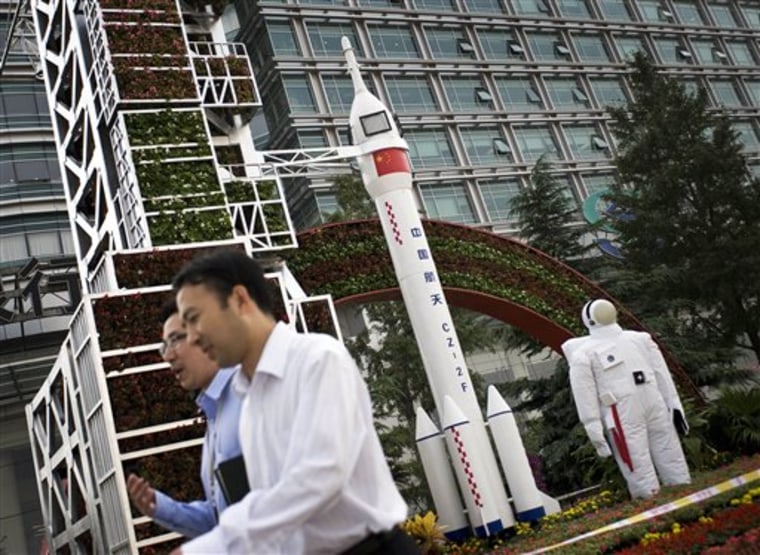China broke ground on its fourth space center Monday, highlighting the country's soaring space ambitions six years after it sent its first man into orbit.
The space port on the southern island province of Hainan incorporates a launch site and mission control center for slinging the country's massive new rockets into space carrying satellites and components for a future space station and deep space exploration.
The reports portrayed the center as a major stride forward for China's military-backed space program, which has launched three manned missions since 2003, including one last year that featured the country's first space walk.
China's future space ambitions include building an orbiting station and sending a mission to the moon, putting it in the forefront of the tightening Asian space race involving India, Japan and South Korea. China says its space program is purely for peaceful ends, although its military background and Beijing's development of anti-satellite weapons have prompted some to question that.
The Hainan center, located near the town of Wenchang and slated to go into use in 2013, is located at a latitude of about 19 degrees north, far closer to the equator than China's other bases in the its southwest and northern plains.
Proximity to the equator is an advantage for launching payloads such as geostationary satellites used for telecommunications because less fuel propellant is needed. Reports said rockets launched from the Hainan base will be capable of carrying up to 14 percent more payload than those launched from Jiuquan, the home of the manned space program in northern China.
That added capacity should aid particularly in China's space station program as well as plans to assemble the Beidou, or "Compass," navigation system as an alternative to the U.S. satellite GPS network, the dominant positioning system.
The center is also served by a nearby port, allowing for the transport by ship of components such as the new generation Long March 5 rocket capable of launching 25-ton components for a space station or future lunar missions. China's other space centers are located in remote parts of the country that rely on limited capacity rail links to transport rockets and other components.
According to media reports, the Hainan center's construction involves upgrading a small satellite launch pad already on the site and building a second pad and other infrastructure. More than 6,000 area residents are being moved to procure the 3,000 acres needed for the base.
China is just the third country after Russia and the United States to have launched a person into space, and has long operated a successful commercial satellite launch program.
Officials say plans call for an unmanned moon landing around 2012, a mission to return samples in 2015, and possibly a manned lunar mission by 2017 — three years ahead of an initial U.S. target date for returning to the moon.
Viewed as a source of national pride and patriotism, the program's strong public support helps shield it from the public doubts and budgetary pressures that constrain such programs elsewhere.
However, cooperation in space with other countries has been inhibited by wariness over the program's close military ties. Highlighting that relationship, Chang Wanquan, a People's Liberation Army general who sits on the ruling Communist Party's powerful central military commission, joined other officers and technicians in Monday's groundbreaking ceremony, the reports said.
